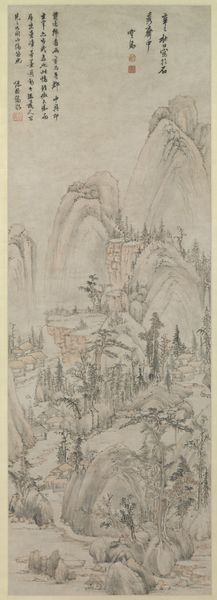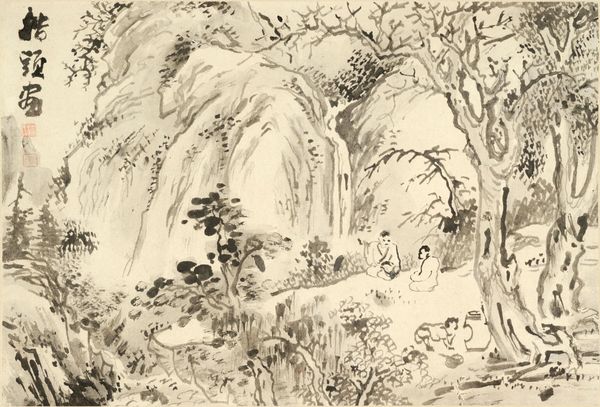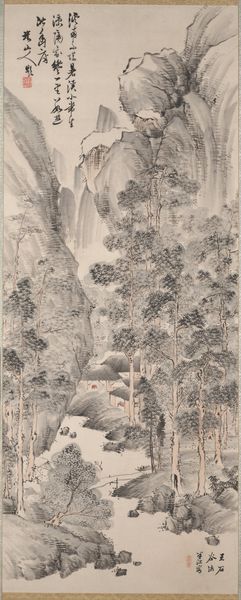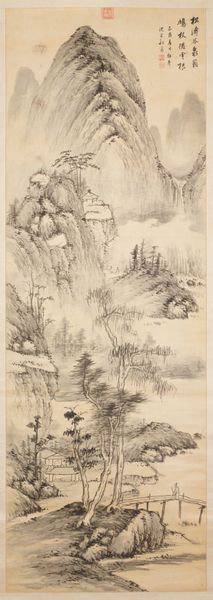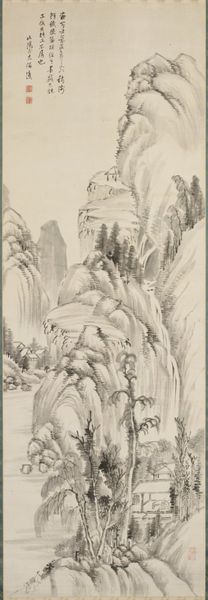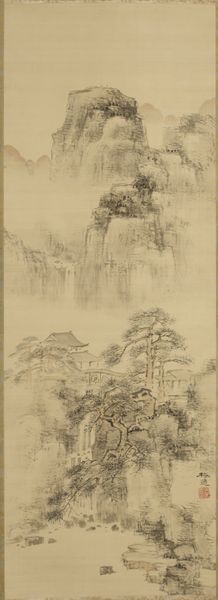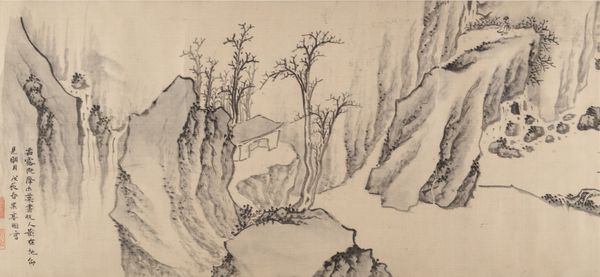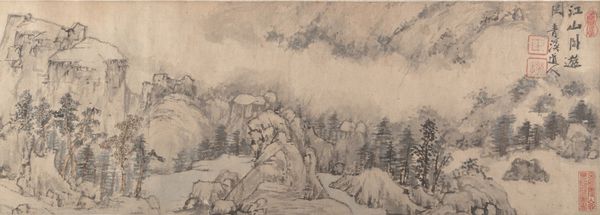
Landscape after Wang Meng's -Noble Reclusion Among Pines and Streams- c. 1730
0:00
0:00
paper, ink-on-paper, hanging-scroll, ink
#
asian-art
#
landscape
#
paper
#
ink-on-paper
#
hanging-scroll
#
ink
#
geometric
#
china
#
line
Dimensions: 27 11/16 x 11 7/8 in. (70.33 x 30.16 cm) (image)73 1/2 x 18 7/8 in. (186.69 x 47.94 cm) (overall, without roller)
Copyright: Public Domain
Xie Songzhou created *Landscape after Wang Meng's -Noble Reclusion Among Pines and Streams-* with ink on paper. Notice the towering peaks and cascading waterfalls rendered in monochrome. The composition is dominated by verticality, as the mountains rise dramatically. Observe how Xie employs texture to articulate form. He destabilizes traditional meanings, playing with negative and positive space. Dense clusters of ink strokes model the rugged surfaces of the rocks, while blank areas evoke mist and distance. This technique not only creates depth but also embodies a Taoist sensibility, where emptiness is as important as substance. Note how the artist engages with the historical context of Chinese landscape painting. By referencing Wang Meng, Xie aligns himself with a lineage of scholar-artists who sought refuge in nature. Through his formal choices, he creates a visual experience that transcends mere representation, inviting reflection on the interplay between presence and absence, form and void.
Comments
minneapolisinstituteofart almost 2 years ago
⋮
Xie Songzhou, a commoner from Suzhou, was a poet, painter, calligrapher, collector, and art connoisseur. During the Yongzheng reign (1723-35), he served as artistic advisor and connoisseur of paintings in the imperial collection. This position gave him direct access to exceptional ancient paintings. His landscapes were said to be modeled on Yuan dynasty (1280-1368) masters such as Ni Zan, Huang Gong Wang, and Wang Meng. This inscription notes that the painting is modeled after Wang Meng's (1308-85) painting, "Noble Reclusion Among Pines and Streams." The flattened meticulous brushwork is, in fact, rather close to the classic style of the ancient master. In this regard, while Hsieh's values fit easily within the Qing orthodox tradition, this work has a more literal interpretation of historic literati painting than is usually seen in the orthodox style. Xie's poem in the upper right reads: Of men who do not live near floating mist,Who could ever draw my fond thoughts'Moonlight: I yearn for nights when we'd buy wine;Villages: I love the times when they sell flowers;The shop at the bridge beneath the yellow leaves;The stele on the dike, hidden in grey haze,And your single pavilion, adorned by fragrant waters,Gateway neighboring the residence of Xi Shi !
Join the conversation
Join millions of artists and users on Artera today and experience the ultimate creative platform.

